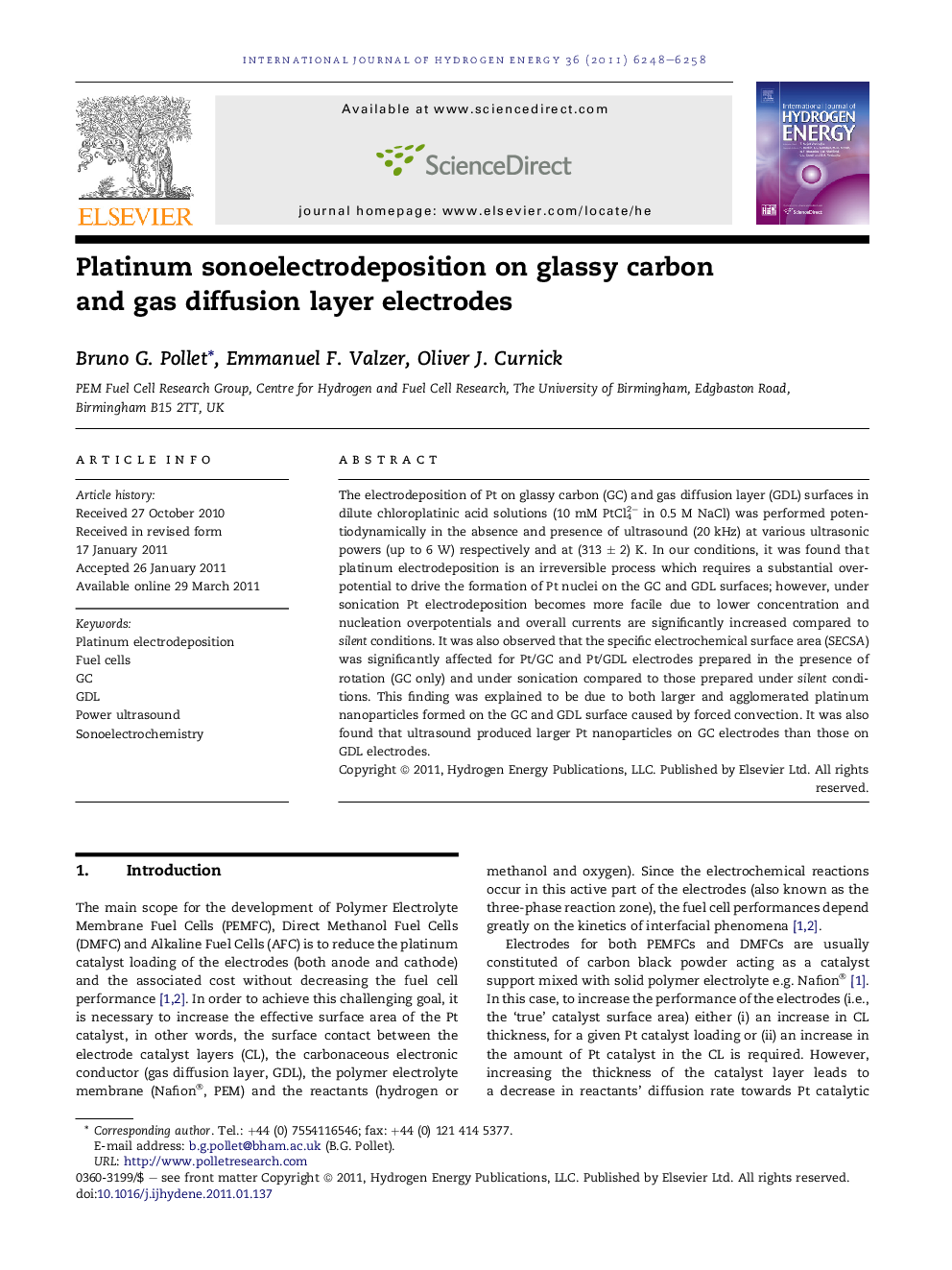| Article ID | Journal | Published Year | Pages | File Type |
|---|---|---|---|---|
| 1279555 | International Journal of Hydrogen Energy | 2011 | 11 Pages |
The electrodeposition of Pt on glassy carbon (GC) and gas diffusion layer (GDL) surfaces in dilute chloroplatinic acid solutions (10 mM PtCl42− in 0.5 M NaCl) was performed potentiodynamically in the absence and presence of ultrasound (20 kHz) at various ultrasonic powers (up to 6 W) respectively and at (313 ± 2) K. In our conditions, it was found that platinum electrodeposition is an irreversible process which requires a substantial overpotential to drive the formation of Pt nuclei on the GC and GDL surfaces; however, under sonication Pt electrodeposition becomes more facile due to lower concentration and nucleation overpotentials and overall currents are significantly increased compared to silent conditions. It was also observed that the specific electrochemical surface area (SECSA) was significantly affected for Pt/GC and Pt/GDL electrodes prepared in the presence of rotation (GC only) and under sonication compared to those prepared under silent conditions. This finding was explained to be due to both larger and agglomerated platinum nanoparticles formed on the GC and GDL surface caused by forced convection. It was also found that ultrasound produced larger Pt nanoparticles on GC electrodes than those on GDL electrodes.
► Pt electrodeposition is an irreversible process on GC and GDL surfaces. ► Under sonication Pt electrodeposition on GC and GDL surfaces becomes more facile. ► SECSAs are significantly affected for Pt/GC and Pt/GDL electrodes under ultrasound. ► Ultrasound modifies the electroplating/deposition and increases Pt active sites for hydrogen adsorption. ► Electrodeposited Pt on GDL samples under ultrasound lead to smaller Pt particle sizes (<200 nm).
